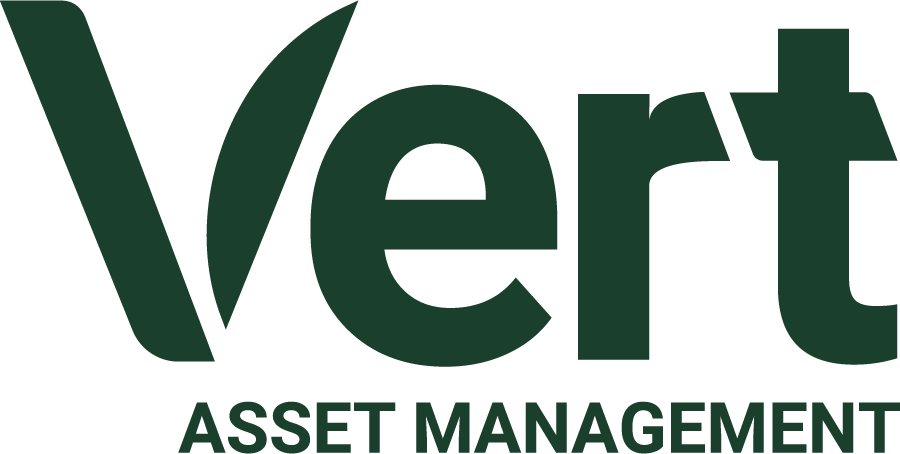Sekisui House REIT, Inc.
“Leading the way to a decarbonized society. Secure, high-quality lifestyles will realize a sustainable society that is not dependent on fossil fuels or constrained by energy problems.” — Sekisui House
Ticker
3309 J-REIT
(Tokyo Stock Exchange)
Headquarters
Tokyo, Japan
Market Cap
USD $12.2 billion1
Company History
Established in 1960
Properties
113
Green Building Certifications
38
*Data as of June 30, 2018.
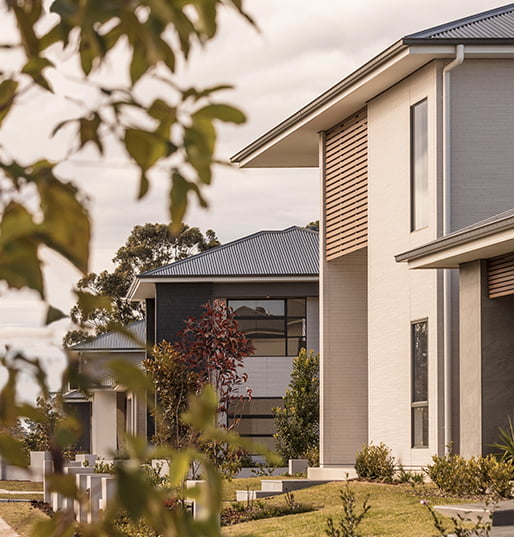
Who is Sekisui House REIT, Inc.?
Sekisui House REIT, Inc. is primarily an owner and operator of residences and office buildings. The majority of their properties are residential consisting of detached houses and rental apartments in Japan, China, Singapore, Australia and even the US. Most of the portfolio properties are located in Japan in one of the three major metropolitan areas of Tokyo, Osaka, and Nagoya. The company’s focus on residential properties is evident in their strapline “Changing the World Through Living”.2 Sekisui House is focused on net-zero buildings, earthquake safe construction, and building communities.
Sustainable Society Actions and Goals
Sekisui House has already managed an impressive array of sustainability awards and achievements. Over 50% of their properties, by asset value, are green building certified. Nearly all of their portfolio – 93% of their properties – are within a 10-minute walk to public transportation.3 What further distinguishes Sekisui House are their strong future commitments to sustainability. Sekisui House’s goals towards zero emissions has been third-party audited by the Science Based Targets Initiative.4 This process includes CEO and CFO sign-off and is a public commitment to reporting year-on-year carbon reductions towards this goal.
The company is working on four main objectives: decarbonization, biodiversity, zero-waste, and inclusion.
Strategy Spotlight: Positive Places
In 2009, Sekisui House launched their ‘Green First Zero’ homes initiative with the goal to create net-zero energy homes through sustainable design and implementation. Energy-saving solutions include high-efficiency air-conditioning, LED lighting and finely-tuned home energy management systems. They employ argon gas-filled multi-layered glass windows for better insulation than single-pane windows. Home sites and building orientations are selected to optimize passive solar energy and natural ventilation. While the initial build costs are slightly higher, the energy-saving provisions reduce the utility costs significantly for the resident. Sekisui House was the first company in the Japanese housing industry to be certified as an Eco-First Company by the Minister of the Environment (MOE) in Japan.5
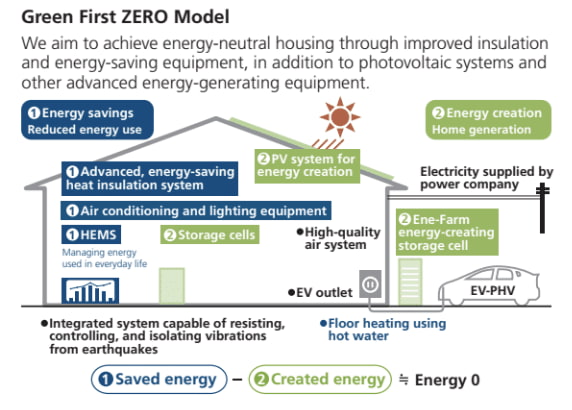
Green First Zero aims for energy self-sufficiency without sacrificing the comfort of the living environment. The building design offsets energy use towards a goal of zero energy consumption. It does this through (1) energy savings and (2) energy creation.
The diagram illustrates energy savings in blue highlighting measures that reducing household energy use to 50% of conventional levels through heat insulation and high-efficiency equipment. Energy creation solutions to produce electricity are shown in green.
Source: Sekisui House (2018). “Sustainability Report 2018: Expanding Net-Zero-Energy Housing.” Sustainability Reports. Available from: http://www.sekisuihouse.co.jp/english/sr/2018.html
Recent Awards
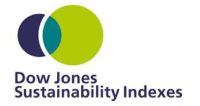
Included in the DJSI World Index and DJSI Asia Pacific Index6
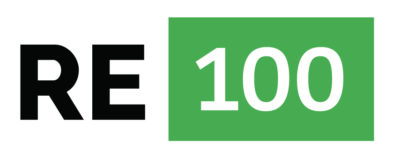
Joined 2017 RE100 Initiative – a public commitment to use 100% renewable electricity7
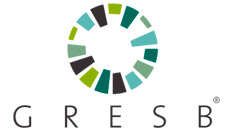
Global Real Estate Sustainability Benchmark 2018 Green Star8
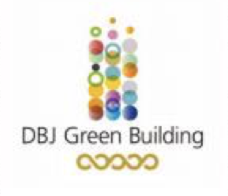
Development Bank of Japan Green Building Certification9
1 Sekisui House REIT, Inc. 0.23% the Vert Global Sustainable Real Estate Fund (VGSRX) as of June 30, 2018.
2 Sekisui House REIT, Inc. (2018). “Sustainability Report 2018: Focused on Creating Shared Value”. January 31, 2018, p. 1.
3 Sekisui House REIT, Inc. (2018). “Fiscal Results Briefing.” June 15, 2018.
4 Sekisui House REIT, Inc. (2018). “Sustainability Report 2018: Focused on Creating Shared Value”. January 31, 2018, p.28.
5 Sekisui House (2018). “Sustainability Report 2018: Expanding Net-Zero-Energy Housing.” Sustainability Reports. Available from: http://www.sekisuihouse.co.jp/english/sr/2018.html
6 The Dow Jones Sustainability Indexes were developed in 1999 by RobecoSAM who each year compile ESG information on 3,400 companies around the world. The Dow Jones Sustainability™ World Index comprises global sustainability leaders as identified by RobecoSAM. It represents the top 10% of the largest 2,500 companies in the S&P Global BMI based on long-term economic, environmental and social criteria.The Dow Jones Sustainability Asia/Pacific Index is designed to measure the performance of Asia-Pacific sustainability leaders as identified by RobecoSAM through a corporate sustainability assessment. It represents the top 20% of the 600 largest companies in the Asia-Pacific developed region in the S&P Global BMI based on long-term economic, environmental and social criteria.
7 RE100 Initiative is public commitment to use 100% renewable electricity.
8 GRESB – the Global Real Estate Sustainability Benchmark collects data each year on real estate entities who pay to participate.
9 DBJ Green Building Certification assesses properties in three areas ecology, risk management & amenities/diversity, and community & partnership. Sekisui House has 38 properties with 3 starsor more. Sekisui House has two buildings with a 5-star rating: an office building Garden City Shinagawa Gotenyama and a residential property Prime Maison Shinagawa.
Please refer to the Prospectus for full risk disclosures. All data as of June 30, 2018 and subject to change daily.
